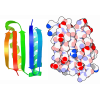Entry Database : PDB / ID : 3wn7Title Crystal Structure of Keap1 in Complex with the N-terminal region of the Nrf2 transcription factor Kelch-like ECH-associated protein 1 Peptide from Nuclear factor erythroid 2-related factor 2 Keywords / / / Function / homology Function Domain/homology Component
/ / / / / / / / / / / / / / / / / / / / / / / / / / / / / / / / / / / / / / / / / / / / / / / / / / / / / / / / / / / / / / / / / / / / / / / / / / / / / / / / / / / / / / / / / / / / / / / / / / / / / / / / / / / / / / / / / / / / / / / / / / / / / / / / / / / / / / / / / Biological species Mus musculus (house mouse)Method / / / Resolution : 1.57 Å Authors Fukutomi, T. / Takagi, K. / Mizushima, T. / Ohuchi, N. / Yamamoto, M. Journal : Mol.Cell.Biol. / Year : 2014Title : Kinetic, thermodynamic, and structural characterizations of the association between Nrf2-DLGex degron and Keap1Authors : Fukutomi, T. / Takagi, K. / Mizushima, T. / Ohuchi, N. / Yamamoto, M. History Deposition Dec 5, 2013 Deposition site / Processing site Revision 1.0 Dec 25, 2013 Provider / Type Revision 1.1 Jul 16, 2014 Group Revision 1.2 Nov 8, 2023 Group Data collection / Database references ... Data collection / Database references / Derived calculations / Refinement description Category chem_comp_atom / chem_comp_bond ... chem_comp_atom / chem_comp_bond / database_2 / pdbx_initial_refinement_model / struct_ref_seq_dif / struct_site Item _database_2.pdbx_DOI / _database_2.pdbx_database_accession ... _database_2.pdbx_DOI / _database_2.pdbx_database_accession / _struct_ref_seq_dif.details / _struct_site.pdbx_auth_asym_id / _struct_site.pdbx_auth_comp_id / _struct_site.pdbx_auth_seq_id Revision 1.3 Oct 30, 2024 Group / Category / pdbx_modification_feature
Show all Show less
 Yorodumi
Yorodumi Open data
Open data Basic information
Basic information Components
Components Keywords
Keywords Function and homology information
Function and homology information
 X-RAY DIFFRACTION /
X-RAY DIFFRACTION /  SYNCHROTRON /
SYNCHROTRON /  MOLECULAR REPLACEMENT / Resolution: 1.57 Å
MOLECULAR REPLACEMENT / Resolution: 1.57 Å  Authors
Authors Citation
Citation Journal: Mol.Cell.Biol. / Year: 2014
Journal: Mol.Cell.Biol. / Year: 2014 Structure visualization
Structure visualization Molmil
Molmil Jmol/JSmol
Jmol/JSmol Downloads & links
Downloads & links Download
Download 3wn7.cif.gz
3wn7.cif.gz PDBx/mmCIF format
PDBx/mmCIF format pdb3wn7.ent.gz
pdb3wn7.ent.gz PDB format
PDB format 3wn7.json.gz
3wn7.json.gz PDBx/mmJSON format
PDBx/mmJSON format Other downloads
Other downloads 3wn7_validation.pdf.gz
3wn7_validation.pdf.gz wwPDB validaton report
wwPDB validaton report 3wn7_full_validation.pdf.gz
3wn7_full_validation.pdf.gz 3wn7_validation.xml.gz
3wn7_validation.xml.gz 3wn7_validation.cif.gz
3wn7_validation.cif.gz https://data.pdbj.org/pub/pdb/validation_reports/wn/3wn7
https://data.pdbj.org/pub/pdb/validation_reports/wn/3wn7 ftp://data.pdbj.org/pub/pdb/validation_reports/wn/3wn7
ftp://data.pdbj.org/pub/pdb/validation_reports/wn/3wn7
 Links
Links Assembly
Assembly
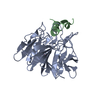
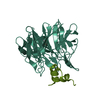
 Components
Components


 X-RAY DIFFRACTION / Number of used crystals: 1
X-RAY DIFFRACTION / Number of used crystals: 1  Sample preparation
Sample preparation SYNCHROTRON / Site:
SYNCHROTRON / Site:  SPring-8
SPring-8  / Beamline: BL44XU / Wavelength: 0.9 Å
/ Beamline: BL44XU / Wavelength: 0.9 Å Processing
Processing MOLECULAR REPLACEMENT
MOLECULAR REPLACEMENT Movie
Movie Controller
Controller


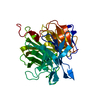
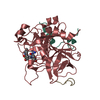
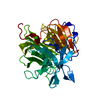
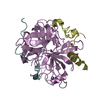
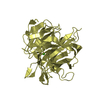
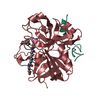
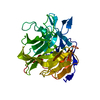
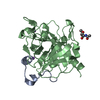
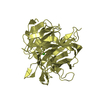

 PDBj
PDBj

